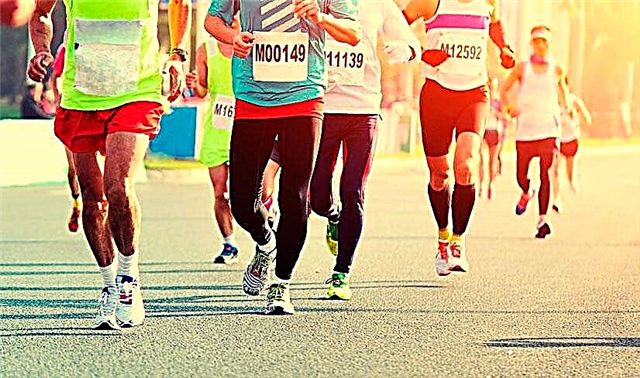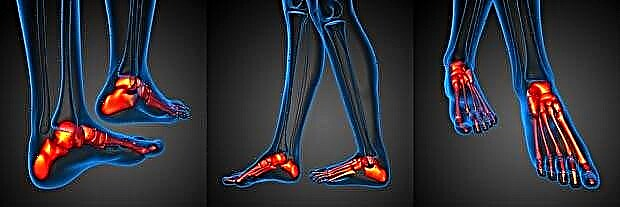Crossfit exercises
6K 0 09.06.2017 (last revision: 07.01.2019)
Barbell Lateral Lunge is an unusual exercise for developing the muscles of the legs and buttocks. Unlike classic barbell or dumbbell lunges, the bulk of the load here falls on the lateral bundle of the quadriceps and gluteal muscles. The hamstrings and adductors are much less involved in movement.
It is recommended to perform side lunges with a barbell, and not with dumbbells. This will make it easier for you to control the position of the body, and you will not bend too much forward, which will allow you to better focus on working out the target muscle group.
In this article we will look at how to do this exercise correctly, and what it will give us on a regular basis.
What muscles work?
Let's start by looking at which muscles work when performing side barbell lunges.
- The main working muscle groups are the quadriceps (mainly the lateral and medial bundles) and the gluteal muscles.
- The indirect load is applied to the hamstrings and adductors.
- The extensors of the spine and abdominal muscles act as stabilizers of the body in motion.

Benefits and contraindications
Next, we want to draw your attention to the useful points of the exercise, and also talk about some of the existing contraindications.
The benefits of exercise
The barbell to the side lunges is one of the few exercises that you can use to emphasize the load on the outside of the quadriceps. Many athletes involved in fitness and bodybuilding have a certain imbalance: the inner thigh is well developed, and the outer quadriceps falls out of the big picture. The leg muscles look disproportionate.
To fix this, more attention needs to be paid to exercises that locally load the lateral head of the quadriceps, such as side lunges with a barbell, leg presses with narrow legs, or squats in the Smith machine with narrow legs. Such an approach to training will help to gain muscle mass, increase strength and improve relief.
Contraindications
However, due to medical contraindications, this exercise is not suitable for all athletes. Lateral lunges have a profound effect on the knee joint and ligaments. People who have had cruciate ligament injuries often experience pain and discomfort while performing it. In addition, such exercises are highly discouraged for persons with serious chronic diseases such as tendinitis, bursitis, or osteochondrosis.
Barbell lunges to the sides are a fairly safe and convenient exercise from the point of view of biomechanics, but some athletes manage to get injured on it. In 99% of cases this happens due to non-observance of the technique of working with a large weight. You should work here with a comfortable weight, with which you can perform at least 10 repetitions on each leg, without breaking the technique. Power records and huge working weights are completely useless here.
Side lunges technique
The technique for performing the exercise is as follows:

- Remove the barbell from the racks or lift it over you and place it on the trapezius muscles, as with regular squats.
- Starting position: the back is straight, the legs are parallel to each other, the pelvis is laid back a little, the gaze is directed forward. With our hands we hold the barbell, holding it slightly wider than shoulder level.
- We take a breath and step to the side with one foot. The stride length is about 40-50 centimeters. You do not need to take a wider step, otherwise it will be more difficult for you to maintain balance. The main technical subtlety here is the position of the foot. If you rotate the foot 45 degrees, you can easily squat in full amplitude, but most of the load will shift to the inner thigh. If you do not turn the foot at all, then it is not a fact that you will be able to sit down really deeply and completely contract the quadriceps - many people simply do not have enough flexibility for this. Therefore, it is recommended to put your foot at a very small angle - about 10-15 degrees. This will allow you to perform full swing lunges without discomfort in your knee joints.
- Exhaling, we get up and return to the starting position. The key here is to keep the thigh in the same plane as the foot. You cannot "wrap" the knee inward. You can do side lunges with each leg in turn, or you can first do the planned amount, for example, with your left foot, and then repeat all the same with your right foot. Choose the option that suits you best.
Crossfit training complexes
| 24 | Perform 24 jump squats, 24 barbell side lunges (12 on each leg), and a 400 meter run. 6 rounds in total. |
| Anny | Perform 40 jump squats, 20 sit-ups, 20 barbell side lunges, and 40 sit-ups. The challenge is to complete as many rounds as possible in 25 minutes. |
| Tourist Breakfast | Perform 10 burpees, 15 box jumps, 20 kettlebell swings with both hands, 20 sit-ups, and 30 side lunges with a barbell. Only 5 rounds. |









